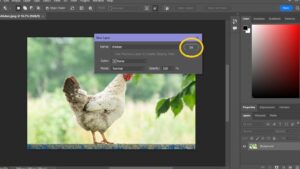
In the digital era, the ability to manipulate an image’s background has become an essential skill. Whether you’re a small business or a social media enthusiast, understanding the art of editing backgrounds can transform your images from mundane to mesmerizing.
Editing:ufqlentst70= Background

An understanding of the editing background concept can be best garnered from a breakdown of both the practical techniques used and the skillsets required. This context brings clarity to the vital role background editing plays in image manipulation.
Asserting control over technology strategies used in background editing remains a significant part of mastering the art. Different software offer varied capabilities, from Photoshop’s comprehensive, sophisticated toolsets to Canva’s user-friendly interface, making the task of background editing seamless.
Harnessing these diverse toolsets illustrates one’s technological leadership, which involves:
- Selecting the appropriate software, considering factors such as complexity of task and level of expertise. Examples include Adobe’s Photoshop for professionals and Canva for beginners.
- Understanding the use and functions of specialized tools for background editing. Examples are the Magic Wand Tool, the Lasso Tool, and the Pen Tool.
- Keeping abreast with updates and advancements in the editing software. For instance, Adobe regularly updates Photoshop with improved features and tools.
Experts manipulate software tools not merely to erase or replace existing backgrounds, but to effectively transpose subjects into fresh contexts, enhancing the overall impact of the image. It is pivotal to comprehend that the prowess in these technology-leading strategies comes with regular practice and continuous learning.
Tools and Software for Editing Backgrounds

Advancing in technology leadership strategies, expert editors turn to specialized software and tools. Photoshop remains a popular choice among professionals. It offers advanced functions like pen tool, magic wand, and quick selection tool, facilitating precise background alterations. GIMP, a free and open-source tool, mirrors many Photoshop features, ensuring robust editing prowess, especially in background modifications. Similarly, Lightroom, celebrated for its color correction capabilities, proves a reliable sidekick for background enhancements.
For beginners or those seeking simpler solutions, Canva could be a good fit. It’s simple, user-friendly, and provides various templates to modify backgrounds effectively. Similarly, PicMonkey also offers a streamlined process to change backgrounds. In contrast, Remove.bg takes a different approach, with a singular focus on automatic background removal—an ideal tool when dealing with numerous images.
Finally, modern designers often lean towards Luminar. It’s artificial intelligence-driven tools offer a groundbreaking approach to background editing, making the process efficient and effortless.
Techniques for Effective Background Editing

For robust background editing, mastering diverse techniques elevates image manipulation. Use of Layer Masks in software like Photoshop and GIMP offers vast control over selective modifications. Secondly, the Clone Stamp tool helps duplicate specific aspects of the image, aiding in replacing unwanted elements. Additionally, the Blur or Gaussian Blur tool enhances focus by blurring the background, benefitting portrait or product photography. Fourthly, the Lasso and Magic Wand tools come in handy for swift, precise selections around objects, promoting quick background alterations. Furthermore, employing background removers like Remove.bg simplifies complex editing tasks. Lastly, Touchup and Healing Brush tools prove useful for patching up minor flaws, allowing for careful refinement.
Lastly, Lightroom’s Graduated and Radial Filters modify background exposure, brightness, or color tone selectively. The Brush tool, similar in function, permits meticulous highlighting or subduing desired areas. Equally important, Canva and PicMonkey’s ready-to-use templates and background designs boost creativity, facilitating unique photo manipulations.
Practicing these techniques catalyzes efficient editing procedures, refining visual aesthetics in the background – a step potent for quality image production.
Common Challenges in Editing Backgrounds
Editing backgrounds in images isn’t just a skill, it’s an art form that elevates the quality of visuals in the digital world. The tools and software discussed, from Photoshop to Luminar, offer a broad range of features for both beginners and experts. The advanced techniques like Layer Masks, Clone Stamp, and selection tools streamline the editing process, enhancing the visual aesthetics of any image’s background. Lightroom’s filters and Brush tool, along with Canva and PicMonkey’s templates, play a significant role in modifying exposure, brightness, and color tone. By practicing these techniques, anyone can overcome the common challenges in background editing. Remember, it’s not just about removing or changing the background—it’s about creating a compelling visual narrative that resonates with your audience.
